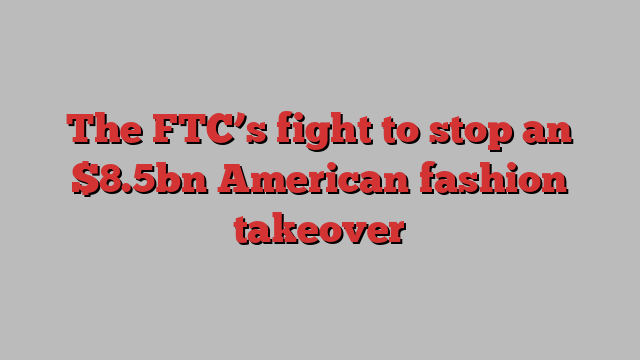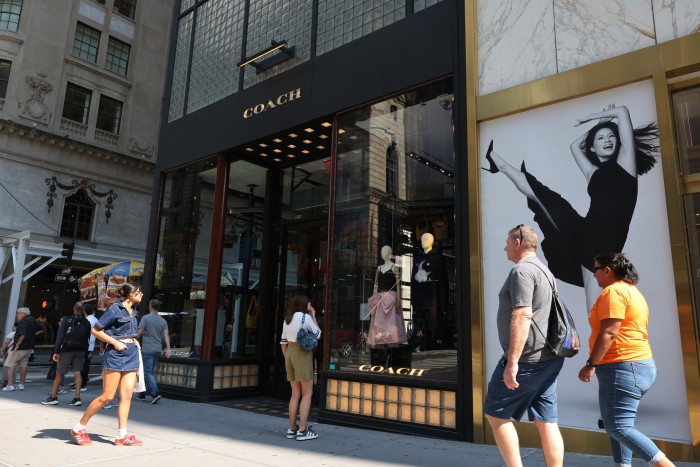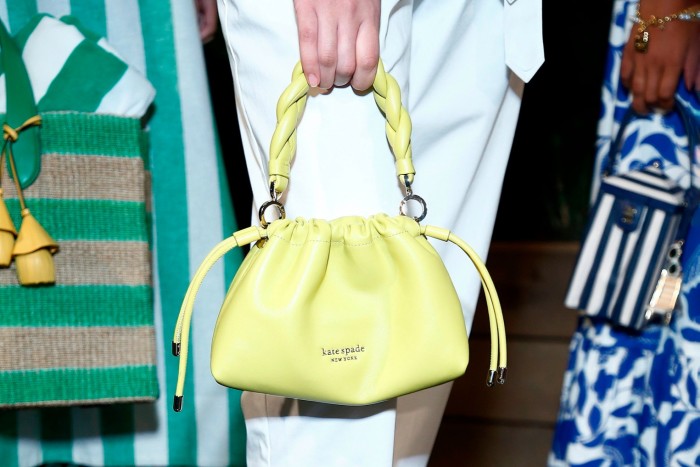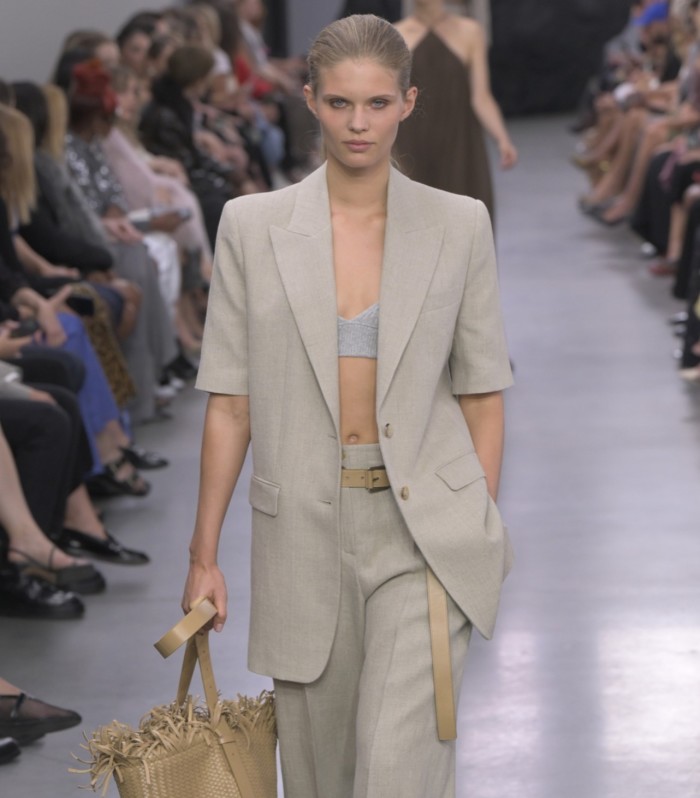
Michael Kors debuted his latest collection at New York Fashion Week last Tuesday before a star-studded crowd including Vogue’s Anna Wintour. Just blocks away, the curtain rose on a different spectacle involving the brand.
At a courthouse in lower Manhattan, the owners of Michael Kors and Coach were fighting to allow a multibillion-dollar merger that would put several household-name fashion brands under one roof.
Tapestry — which owns Coach, Kate Spade and Stuart Weitzman — agreed last year to purchase Capri — the owner of Michael Kors, Versace and Jimmy Choo — as many fashion brands endured a slump in sales following the pandemic’s shopping mania.
Yet the proposed deal for Capri has been stuck in limbo since the Federal Trade Commission sued to block the $8.5bn combination five months ago. The trial in Manhattan this month will help determine if the takeover can go through as planned.

Experts believe it is the first major antitrust case to hit the fashion industry, a sector notorious for shifting trends and fortunes. If regulators are successful in thwarting the union, it could have damning implications for fashion houses globally, and would stymie the kinds of serial acquisitions such as those that built European behemoths including LVMH and Kering.
Any client who is interested in buying a clear competitor, even if there are many others in the market, would have major regulatory risk, said George Paul, a partner at White & Case.
“If there’s that kind of language in your documents, no matter what the product market is, you have to be concerned that you’ll get sued” should the regulator win this case, he said. “Because as long as they’re close substitutes, the FTC seems to be discounting the consumer’s ability to actually make the switch” to other brands.
Regulators have built their case around a slice of the market they define as “accessible luxury”: handbags that are relatively affordable but good quality, and that are typically priced between $100 and $1,000. They argue the merger would result in higher prices for consumers and a lower quality in products, “leading to undue concentration and a presumption of illegality”, according to court filings, because a few of the brands compete head-to-head.
Yet the companies insist today’s handbag market is replete with competition. Their witnesses have testified that not only are there hundreds of other brands, but shoppers of varying incomes buy bags at all different prices. Coach and Michael Kors are not just jockeying for sales with other companies in their price bracket — they are also competing against everyone from high-end Celine to eBay.
While the trial is a precursor to further official proceedings, the court’s decision is expected to be pivotal, because the merger needs to close by February. The final witness testimony wrapped up this week, and each side will give closing arguments on September 30. US district judge Jennifer Rochon, who is hearing the case, will make a decision sometime in the next few months on whether to freeze the deal.

Since Lina Khan took the helm of the FTC in 2021, the agency has not shied away from seeking to block big deals, taking bold swings at tie-ups between Nvidia and chip designer Arm, grocery giants Kroger and Albertsons and biotech company Illumina and cancer screening start-up Grail.
“The law doesn’t distinguish between which markets are deserving of competition and innovation,” said Lee Hepner, senior counsel for the American Economic Liberties Project, a think-tank.
If the FTC succeeds in preventing the deal “there might be interesting implications for the fashion industry itself, but really those implications and the preservation of competition and innovation will have ripple effects across markets and industries,” he added.
While Tapestry and Capri are at the centre of the case, they are not the only ones that have featured in the trial. Other global fashion brands including Prada, Chanel and athletic brand Lululemon have been drawn into the proceedings, with many of them subpoenaed to supply documents, expert testimony, or both.
Joanne Crevoiserat, Tapestry’s chief executive, testified for nearly three hours last week in front of a packed courtroom. Next to the witness stand stood beige rolling carts bearing dozens of handbags — which served as legal exhibits.
A lawyer for the company prompted Crevoiserat to hold up a couple of the company’s products before the court to show their differences. She displayed the Coach Rogue bag, which can go for $1,095, and a white-and-green chequered Kate Spade purse. “I could maybe sell some handbags today,” she quipped.

Crevoiserat said competition between the brands would persist even if they fell under the same ownership. “The deal simply wouldn’t pencil if all brands could not grow,” she added.
The case has also put a spotlight on the ever-changing nature of the market for purses, as even rich consumers are turning to popular affordable options such as Trader Joe’s $2.99 mini-tote bag and Lululemon’s $38 “belt bag”. Social media — where new entrants can sell directly to consumers — and the resale market have also dramatically altered the landscape.
“What really pains me is that even my own daughter carries one,” Crevoiserat said, referring to the Lululemon bag.
While there are many competitors, regulators have tried to show that together, Michael Kors, Kate Spade and Coach dominate the market, occupying “well over 50 per cent in the sale of ‘accessible luxury’ handbags in the United States”.
Yet pinning down exactly how consumers buy fashion accessories will prove a steep hurdle. “It’s obviously very difficult to determine to what extent brands compete with one another,” said one former federal antitrust enforcer. “Consumer tastes are very complicated and fashions change. So it’s the kind of case that really doesn’t sit well with the binary logic of market definitions.”
Because both companies are publicly traded, their share prices throughout the trial reflect investors’ confidence that the deal will go through, which would involve Tapestry buying Capri for $57 a share — a roughly 40 per cent premium to where the stock currently trades. Both companies’ shares have climbed since the trial began.
Michael Kors, which was founded in 1981, is one example of a brand that has struggled to keep up. In some antitrust defences, companies will try to argue that one of the businesses needs a merger in order to survive, called the “failing firm defence”.
While Michael Kors is not in a dire financial state, lawyers for Tapestry and Capri have argued its historic strength has recently fizzled.
“This market is so competitive that [Michael Kors] is just not competitively relevant in any unique way,” said one adviser close to Tapestry’s thinking. “And there’s no indication that’s going to improve anytime soon.”
Michael Kors himself testified earlier this week to address how the brand has evolved since he founded it more than four decades ago, and where it stands today. He said the company had suffered from “brand fatigue” recently, and its attempts to re-energise consumers had hit “stasis at this point”.
“When you’ve been a designer for 45 years, it’s a very cyclical business,” Kors said, referring to the industry at large. “Sometimes you’ll be the hottest thing on the block, sometimes you’ll be lukewarm, and sometimes you’ll be cold.”